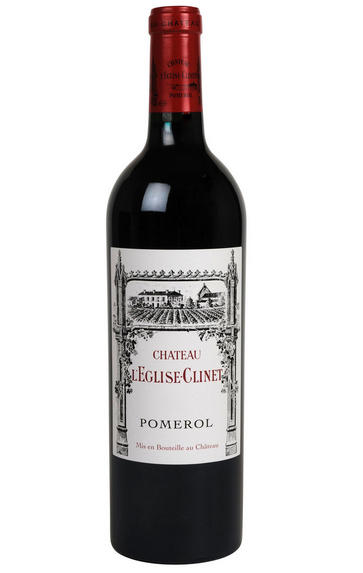
2005 Château l'Eglise-Clinet, Pomerol, Bordeaux
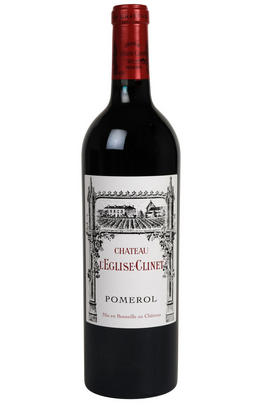
Critics reviews
The 2005 l’Eglise-Clinet was picked from 9 to 23 September. The bouquet races out of the blocks with red berry fruit, brown spices, black truffle and a whiff of smoke. Give it several minutes in the glass and it develops some gorgeous floral aromas, iris and violet, gaining precision with every swirl. The palate is medium-bodied with firm tannin that frames layers of red fruit infused with tea leaf, bay leaf, a touch of white pepper and an almost ferrous finish that caresses gently. This has long been a deeply impressive l’Eglise-Clinet with a half-century lifespan. Tasted at the l’Eglise-Clinet vertical at the château in April 2018.
Drink 2020 - 2060
Neal Martin, Vinous.com (July 2019)
The 2005 L'Eglise-Clinet soars out of the glass with captivating aromatics. Inky dark fruit, graphite, lavender, liquorice, rose petal and spice captivate the senses. In the glass, the 2005 is outrageously beautiful, with layers of inky dark fruit that continue to open, seemingly with no end. Floral notes and redder tonalities of fruit develop with time in the glass. L'Eglise-Clinet is another wine in this tasting that just got better and better with time. It is an epic Pomerol that evokes so many memories of tasting at the château with late proprietor Denis Durantou. Well-stored bottles will prove to be nearly immortal.
Drink 2025 - 2055
Antonio Galloni, Vinous.com (April 2021)
This is the first vintage made with young vines planted in 2001, at 8,000 vines per hectare over 1.5ha, with a pH of 3.6.
Right from the first nose, you find yourself melting into the glass. Layers of complex aromatics prevent you from taking a sip too soon, just sit and enjoy the white truffles, black cherries, tobacco, menthol and liquorice root. These notes continue into the palate, and overall this wine has a huge caressing persistency. The tannins are still holding you tight, very much in control but unobtrusively so.
Drink 2018 - 2038
Jane Anson, Decanter.com
Among the most saturated in color of all the 2005 Pomerols (which is saying something), this wine has a spectacular nose of licorice, mulberry, blackberry and sweet blue fruits. The new oak is completely hidden, the wine full-bodied, multi-layered and just stunning. The purity, richness and skyscraper-like mouthfeel are incredible. Give it another 5-10 years of cellaring and drink it over the following 30+ years.
Drink 2020 - 2060
Robert M. Parker, Jr., Wine Advocate (June 2015)
In bottle. Darker and richer than the magnum! Dense and unevolved. Exciting and dramatic. Really concentrated. Very long. Rich and spicy. Unexpected.
Drink 2019 - 2040
Jancis Robinson MW, JancisRobinson.com (May 2015)
85% Merlot and 15% Cabernet Franc.
This is an elegant wine with wonderful length and beauty. Full yet reserved, showing loads of complexity. This is just starting to show its colours but still needs at least eight years. Don’t touch this until 2018. Please be patient with this one.
James Suckling, JamesSuckling.com (April 2012)
Saturated ruby-red. Superripe, deep aromas of black cherry, mocha, bitter chocolate, liquorice pastille and menthol; almost porty in its ripeness. Hugely concentrated and sweet, with perfectly integrated acidity giving shape and verve to the dark berry, violet and liquorice flavours. A very powerful, age-worthy wine with terrific grip and flavour definition. The serious but fine tannins arrive very late and coat the front teeth. It will be fascinating to taste this alongside the great 1998 in a decade or so.
Stephen Tanzer, Vinous.com (May 2008)
About this WINE
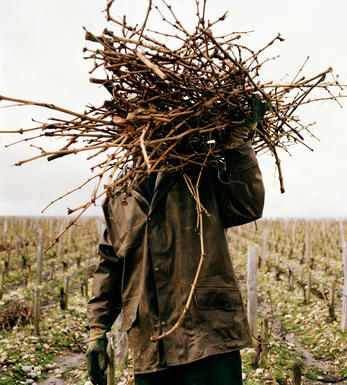
Chateau l'Eglise-Clinet
Château L'Eglise-Clinet is now amongst the elite of Pomerol producers. Its vineyards were originally part of Château Clinet and Château Clos l`Eglise respectively, and the property came into being in the 1950s.
L'Eglise-Clinet has been owned and run by Denis Durantou since 1982. Its 5.5 hectares of vineyards are located on the Pomerol plateau, where the soils are rich in gravel, clay, sand and iron. The vines have a high average age of around 45 years, with a proportion of them dating back to pre-1956, having escaped the brutal frosts of that year.
L'Eglise-Clinet's wine is typically a blend of 80% Merlot and 20% Cabernet Franc. The grapes are vinified in a combination of concrete vats and stainless steel vats. The wine is then aged in small oak barriques (50-70% new) for 18 months.
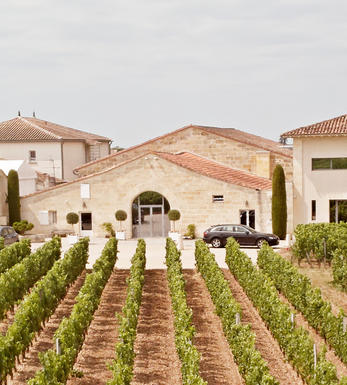
Pomerol
Pomerol is the smallest of Bordeaux's major appellations, with about 150 producers and approximately 740 hectares of vineyards. It is home to many bijou domaines, many of which produce little more than 1,000 cases per annum.
Both the topography and architecture of the region is unremarkable, but the style of the wines is most individual. The finest vineyards are planted on a seam of rich clay which extends across the gently-elevated plateau of Pomerol, which runs from the north-eastern boundary of St Emilion. On the sides of the plateau, the soil becomes sandier and the wines lighter.
There is one satellite region to the immediate north, Lalande-de-Pomerol whose wines are stylistically very similar, if sometimes lacking the finesse of its neighbour. There has never been a classification of Pomerol wines.
Recommended Châteaux : Ch. Pétrus, Vieux Ch. Certan, Le Pin, Ch. L’Eglise-Clinet, Ch. La Conseillante, Ch. L’Evangile, Ch. Lafleur, Trotanoy, Ch. Nenin, Ch. Beauregard, Ch. Feytit-Clinet, Le Gay.
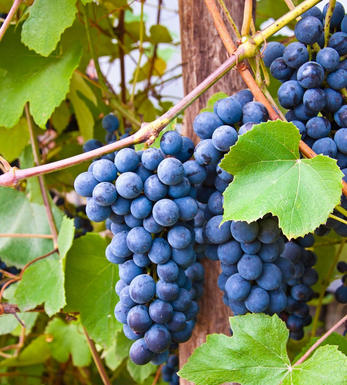
Merlot/Cabernet Franc
Merlot and Cabernet Franc are grape varieties commonly used in Bordeaux-style blends, particularly in the Bordeaux region of France. When these two grapes are blended, they can create a wine that combines the best characteristics of each variety.
Merlot is known for its smoothness, soft tannins, and ripe fruit flavours. It often contributes black cherry, plum, and chocolate flavours to the blend. The grapes are relatively easy to grow and ripen earlier than other Bordeaux varieties, making them versatile for blending.
Cabernet Franc, on the other hand, adds structure, depth, and complexity to the blend. It typically brings aromas of red fruits such as raspberry and strawberry, along with herbal notes like bell pepper and tobacco. These grapes have thinner skins and can be more challenging to cultivate, requiring specific growing conditions to reach their full potential.
When Merlot and Cabernet Franc are combined, the result is a well-balanced wine with various flavours and aromas. The blend often exhibits a Bordeaux wine's medium to full body, along with a smooth texture and moderate tannins. The specific flavour profile can vary depending on the proportions of each grape in the blend and the terroir and winemaking techniques employed.


Buying options
Add to wishlist
Description
The 2005 L'Eglise-Clinet soars out of the glass with captivating aromatics. Inky dark fruit, graphite, lavender, liquorice, rose petal and spice captivate the senses. In the glass, the 2005 is outrageously beautiful, with layers of inky dark fruit that continue to open, seemingly with no end. Floral notes and redder tonalities of fruit develop with time in the glass. L'Eglise-Clinet is another wine in this tasting that just got better and better with time. It is an epic Pomerol that evokes so many memories of tasting at the château with late proprietor Denis Durantou. Well-stored bottles will prove to be nearly immortal.
Drink 2025 - 2055
Antonio Galloni, Vinous.com (April 2021)
wine at a glance
Delivery and quality guarantee